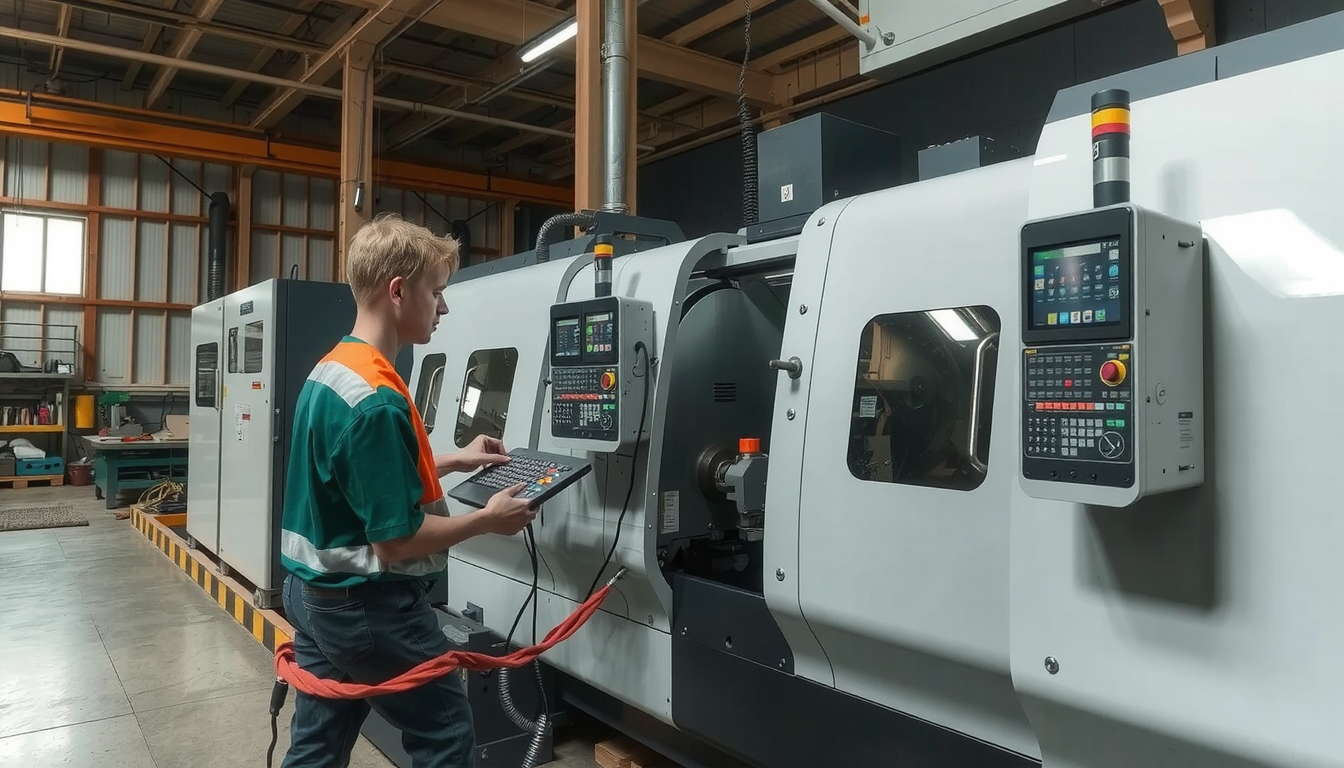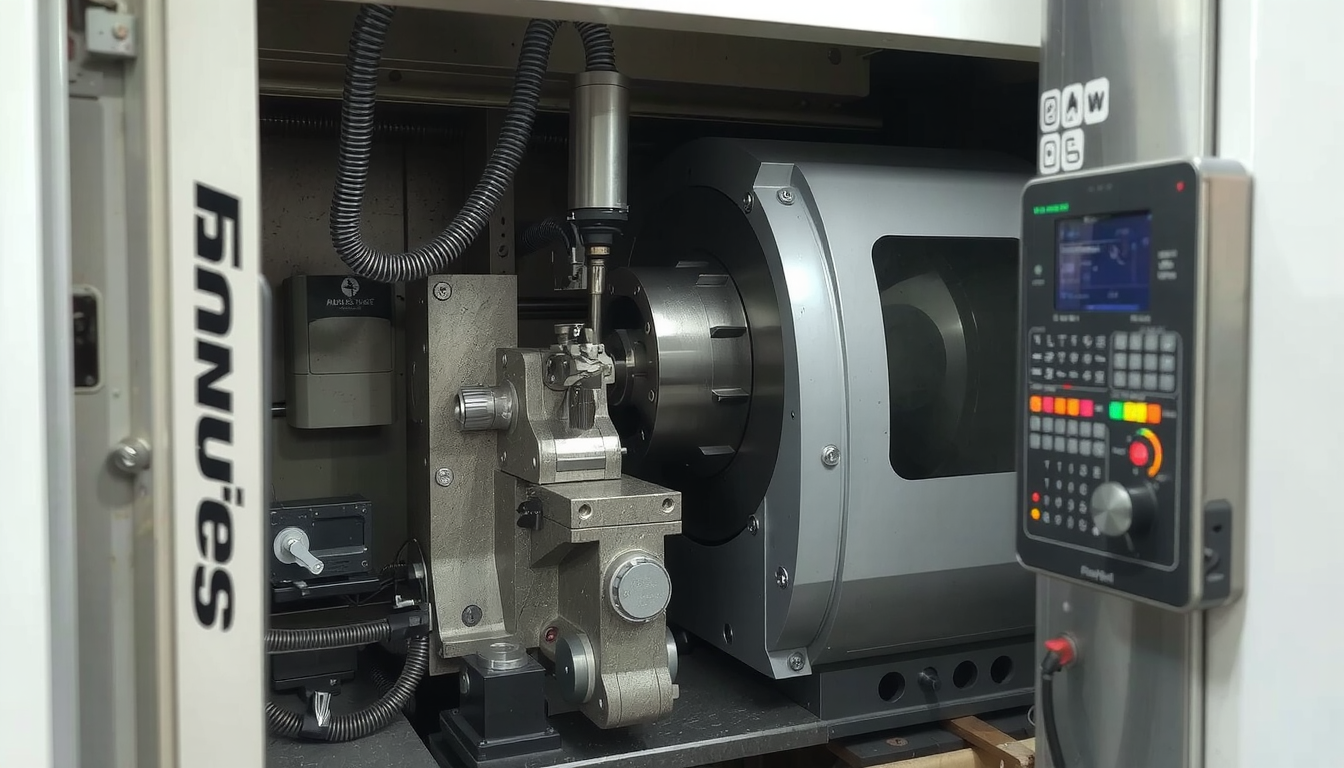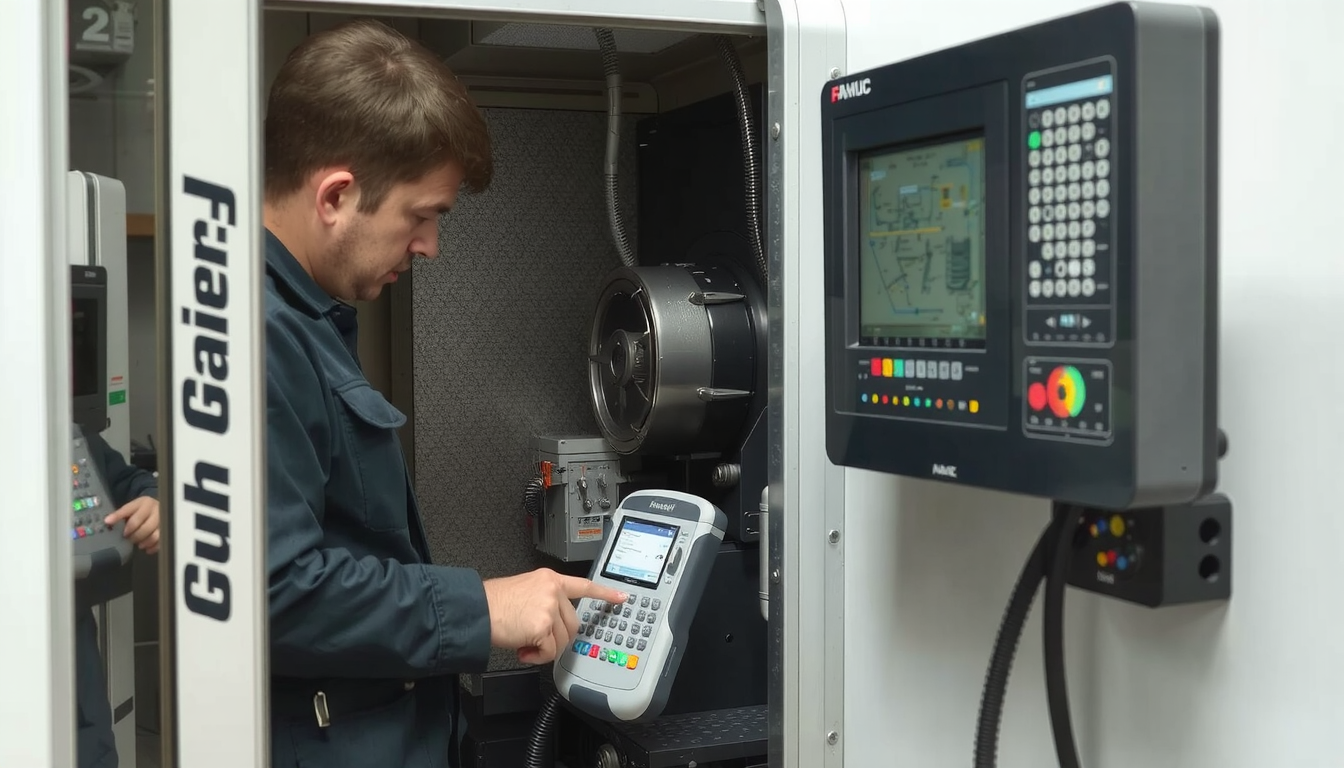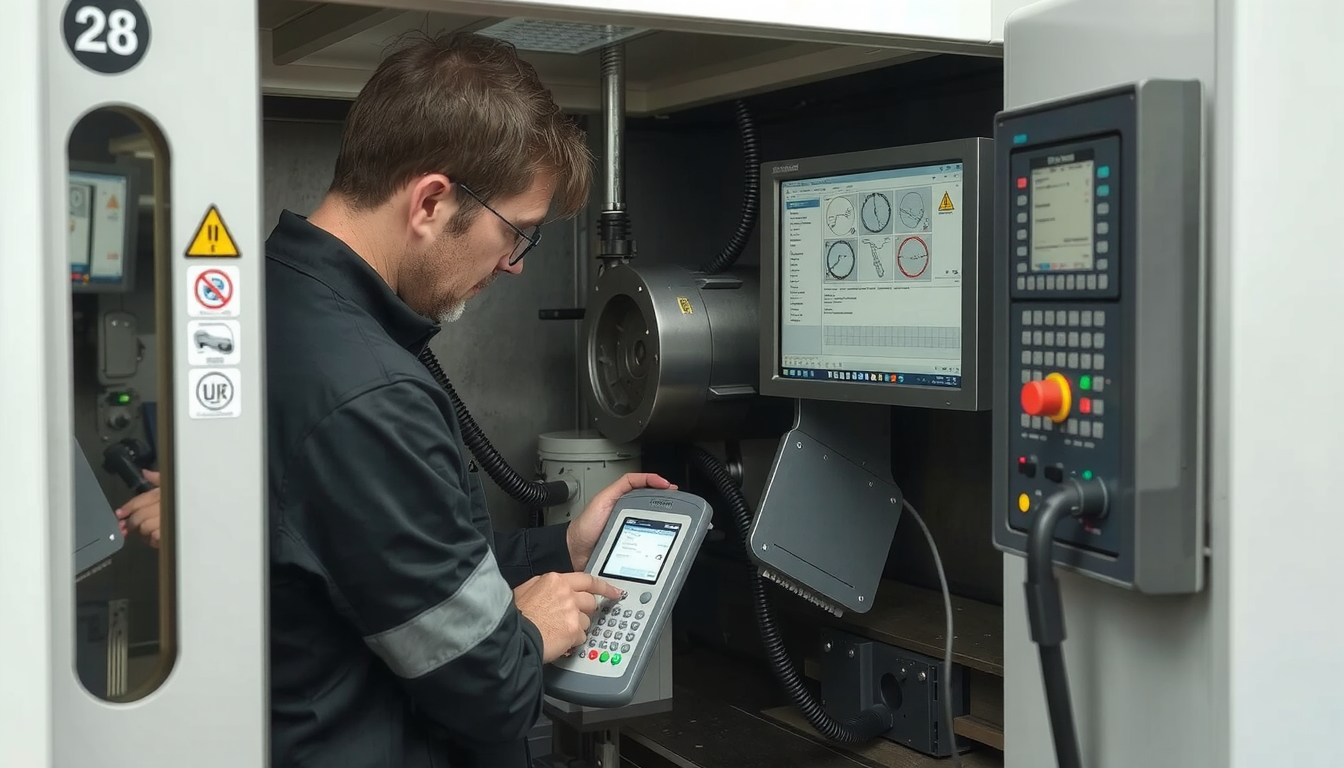Acquiring the knowledge of programming a Fanuc CNC lathe involves getting to know the machine’s language. This includes writing a simple text program with certain commands, particularly G-codes and M-codes, which are the codes used for programming the machine. By using these codes, you can control the movement of the tool, spindle speed, coolant system, and other functions.

This guide will help you through each and every step of the process. We will start by learning the basic structure of a program. Then, we will write a complete working program for a simple part. No prior programming experience is required. You just need to desire to learn the machine language.
The Foundation: Learning Fanuc Program Fundamentals
Before coding, it is a must to understand the characteristics of its parts. Initially, a Fanuc program may look complex, but it is made of simple logical blocks. With the knowledge of these blocks, any fanuc CNC lathe programming can be less typing.
The Components of a Program
The structure of every Fanuc program is the same. Imagine it like a paragraph. It has a title, sentences, and punctuation.
- O-Number (Oxxxx): This is the program’s name or number. It always begins with the letter “O,” followed by at least four digits (e.g., O0001).
- N-Numbers (Nxxx): The line numbers are used for organizing the code and enabling the machine to jump to certain parts.
- Words and Addresses: The term command is called a “word.” For instance, G01 is a word. It is composed of an address (the letter G) and a value (the number 01).
- End of Block (EOB): Each line of code, or “block,” must end with a semicolon (;). This line of code tells the control that the line is finished.
G-Codes: The Language of Motion and Operation
G-codes are the most common commands found in a program. They are classified as Preparatory Functions. They are used to tell the machine how et where to move the cutting tool. They also set the machine for the action to be taken.
G-codes are the most critical to a beginner like you. Beginners should focus on learning only some important commands at the beginning.
| Code | Fonction | Description |
|---|---|---|
| G00 | Rapid Traverse | Moves the tool to a desired position at maximum speed (not for cutting). |
| G01 | Interpolation linéaire | Moves the tool in a straight line at a set feed rate (for cutting). |
| G02/G03 | Interpolation circulaire | Moves the tool in a clockwise (G02) or counter-clockwise (G03) arc. |
| G28 | Home Return | Sends the tool back to the machine’s reference or home position. |
| G50/G96 | Vitesse de la broche | G50 sets a maximum RPM limit; G96 enables Constant Surface Speed. |
| G97 | Constant RPM | Disables G96 and uses a fixed spindle speed. |
M-Codes: The Machine’s Action Commands
M-codes are Miscellaneous Functions. They are utilized for controlling the hardware of the machine. These are similar to the on/off switches but for different machine parts. They turn on the spindle, activate the coolant, and terminate the program.
These M-codes will be the ones you are going to be applying in almost all kinds of programs.
| Code | Fonction | Description |
|---|---|---|
| M03/M04 | Spindle On | Starts the spindle in a clockwise (M03) or counter-clockwise (M04) direction. |
| M05 | Spindle Stop | Stops the spindle from rotating. |
| M08/M09 | Coolant On/Off | Toggles the flood coolant system on (M08) or off (M09). |
| M30 | Program End | Ends the program and resets it to the beginning. |
Important Address Characters (X, Z, F, S, T)
Address characters are the letters that pair with numbers to give a complete command.
* X: The tool’s position affected by the diameter axis.
* Z: The tool’s position affected by the length axis.
* F: Sets the Feed Rate, or how fast the tool moves while cutting.
* S: Sets the Spindle Speed in RPM or surface feet/meters per minute.
* T: Selects the Tool number and its offset (e.g.T0101 selects tool 1 with offset 1).

The codes given are just a small portion of what is available. To view a more extensive selection of codes, see a comprehensive Fanuc G-Code list that showcases all the options available.
Liberation from Coding: Pre-Programming Workflow
Solely programming without errors is not the only thing about CNC programming. A great part of this program is worth preparing the machine in a safe and correct manner. This is a typical protocol that avoids most common problems and malfunctions. It is a vital step that helps you in learning how to program a Fanuc CNC lathe correctly.
Zeroing the Coordinate System (G54)
Before you can instruct the tool where to move, you need to establish a reference point. This point is referred to as Work Zero or Part Zero. It represents the origin (X0, Z0) for all the coordinates in your program.
On a lathe, Z0 is almost always the finished face of the part. X0 is the ole center of the spindle. A work offset is usually used to store this location by G54, which is the most common. Then, the machine knows the position of the part, relative to its own home position.
Setting Up Your Tools: Offsets Matter
The machine does not automatically calculate how long the tools are. You must measure each tool and upload the templates in the tool offset page. This gives the machine the specific distance from the cutter’s tip to the machine’s reference.
This is often made by “touching off.” You will Jog the tool until it contacts the face of the part (for Z) and a known diameter (for X). You will record these values. Without correct tool offsets, the machine cannot cut an accurate part.
The “Safety Block”: The First Lines of Your Program
Every expert programmer uses a “safety block” at the beginning of their program. It is just a line of code that makes the machine go to a known safe state. It wipes out any commands that were left over from the last program or from the user.
This is a simple precautionary measure. It makes sure that the machine doesn’t perform any unintended move when you press “cycle start.” Here is a typical safety block:
* G21: Sets the machine to metric (mm) units (or G20 for inch).
* G40: Cancels cutter compensation (a more advanced topic).
* G80: Cancels any active canned cycles.
* G99: Sets the feed rate mode to “feed per revolution.”
* G28 U0 W0: Sends the X (U) and Z (W) axes to their home position.
Your First Program: A Step-by-Step Guide to Machining a Simple Pin
Now we will combine everything we have learned. We will walk through the process of Fanuc CNC lathe programming by writing a full program. This will move us from theory to a real, practical example.
The Goal: Turning a 2″ Diameter Bar into a 1.5″ Diameter Pin
Our task is simple. We have a piece of 2-inch round stock held in the chuck. We want to program the lathe to turn a section of it down to a 1.5-inch diameter that is 1 inch long.
Step 1: Program Header and Safety

We start with the program number and our safety block. This ensures a clean, safe start.
(Program Name)
(Safety Line)
(Send Machine Home)
Step 2: Tool Call and Spindle Start
Next, we call our turning tool and turn the spindle on. We will use a Constant Surface Speed (G96) for a better surface finish. The G50 command sets a safety limit so the spindle does not go too fast.
(Call Tool 1, Use Offset 1)
(Limit Spindle to 2500 RPM)
(Constant Surface Speed 400 m/min, Spindle On Clockwise)
Step 3: Roughing with the G71 Canned Cycle
Instead of programming every single roughing pass, we can use a canned cycle. G71 is a stock removal cycle. It automates the process of removing large amounts of material. This is a very powerful part of learning how to program a Fanuc CNC lathe. Canned cycles are a deep topic, and you can find many advanced Fanuc programming tutorials that cover them in detail.
The cycle uses two lines:
* First Line: is the depth of each roughing cut. is how far the tool pulls back after each cut.
* Second Line: and tell the cycle that the part’s final shape is defined between lines N100 and N200. and leave a small amount of material for a finish pass. is the feed rate for all roughing moves.
Step 4: Defining the Toolpath Profile (N100 to N200)
Now we just need to describe the final shape of our pin. The G71 cycle will follow this path.
(Rapid with cutter comp to the start point)
(Cut along the Z-axis to the final length)
(Turn off cutter comp and move away from the part)
Step 5: The Finishing Pass (G70)
After roughing, we need one final pass to create a smooth, accurate surface. The G70 finishing cycle is perfect for this. It simply follows the same path defined by P100 and Q200, but in one continuous motion.
(Run a finish pass using the path from N100 to N200)
Step 6: Program End and Cleanup
Finally, we send the tool home, turn off the coolant, and end the program.
(Go Home, Coolant Off)
(End Program and Reset)
The Complete Program Annotated

Here is the full code. The comments in parentheses explain what each section does.
“`gcode
O0001 (SIMPLE PIN PROGRAM);
(— SAFETY AND SETUP —)
G21 G40 G80 G99;
G28 U0 W0;
(— ROUGHING TOOL —)
T0101; (SELECT TOOL 1, OFFSET 1)
G50 S2500; (SET MAX SPINDLE SPEED)
G96 S400 M03; (CSS ON, SPINDLE ON CW)
G00 X2.1 Z0.1 M08; (RAPID TO START POSITION, COOLANT ON)
(— ROUGHING CYCLE —)
G71 U.05 R.02;
G71 P100 Q200 U.01 W.005 F.012;
(— FINISH PROFILE DEFINITION —)
N100 G00 G42 X1.5; (START OF PROFILE)
G01 Z-1.0 F.008;
N200 G40 X2.2; (END OF PROFILE)
(— FINISHING CYCLE —)
G70 P100 Q200;
(— END OF PROGRAM —)
G28 U0 W0 M09; (GO HOME, COOLANT OFF)
M30;
%
“`
Advancing Your Skills and Seeking Expertise
You now have a solid base for Fanuc CNC lathe programming. As you grow, you will find new ways to write more efficient and complex code.
Best Practices for Clean and Efficient Code
- Always use comments to explain complex parts of your program. This helps you and others understand it later.
- Run a “dry run” before cutting metal. This means running the program with the Z-axis moved far away from the part to safely check the tool’s motion.
- Learn the difference between Absolute (G90) and Incremental (G91) positioning. Most lathe work is done in Absolute mode.
When to Seek Professional Help
Learning to program is a valuable skill. However, in a professional production setting, efficiency and precision are critical. For complex parts, tight deadlines, or high-volume jobs, an expert’s knowledge can be invaluable.
This is where professional services de tournage cnc can save you time, reduce material waste, and guarantee the best results. Experts can optimize toolpaths and cycles in ways that take years to master. Mastering the Fanuc CNC Lathe Programming fundamentals is the vital first step before you can tackle more advanced manufacturing challenges.
Conclusion: Your Journey into Fanuc Programming
We have covered the core concepts of how to program a Fanuc CNC lathe. You learned that a program’s structure is logical and made of simple commands. You know that safety blocks are crucial, and that canned cycles are powerful tools for efficiency.
You now have the foundation to start writing your own programs. Like any skill, practice is the key to getting better. Keep learning, stay safe, and enjoy making chips. For more insights into modern manufacturing, explore the resources at Mékalite.
Frequently Asked Questions (FAQ)
What is the main difference between G-code and M-code?
G-codes, or Preparatory codes, mostly control the tool’s movement and the geometry of the cut. They tell the machine to move in a straight line (G01) or an arc (G02/G03). M-codes, or Miscellaneous codes, control a machine’s hardware. They turn the spindle on (M03), stop it (M05), or turn on the coolant (M08). Think of G-codes as “Go” commands and M-codes as “Machine” commands.
How do I set the tool offset on a Fanuc control?
The general process is to call the tool you want to set. Then, you manually jog the tool to touch a specific surface. For the Z-axis, you touch the face of the part. For the X-axis, you touch a known diameter. Once the tool is touching, you go to the “Offsets” page on the control and record that position value for the correct tool number.
Can I learn to program a Fanuc CNC lathe without a machine?
Yes, absolutely. You can write G-code programs in any simple text editor. More importantly, many CNC simulation software programs are available. Some are free or offer trial versions. This software lets you write, test, and see your program run on a virtual machine, so there is no risk of a crash.
What is the most important G-code for a beginner to learn?
G01, which stands for Linear Interpolation, is the most fundamental cutting code. It is used for all straight-line turning and facing operations. Learning how to control its destination (X, Z) and speed (F) is the core skill for all lathe programming.
Is Fanuc programming difficult to learn?
It has a learning curve, just like any new language. However, the system is very logical. The process of learning how to program a Fanuc CNC lathe is straightforward if you start with the basics. By practicing with simple parts like the one in this guide, most people can become good at writing basic programs very quickly.

